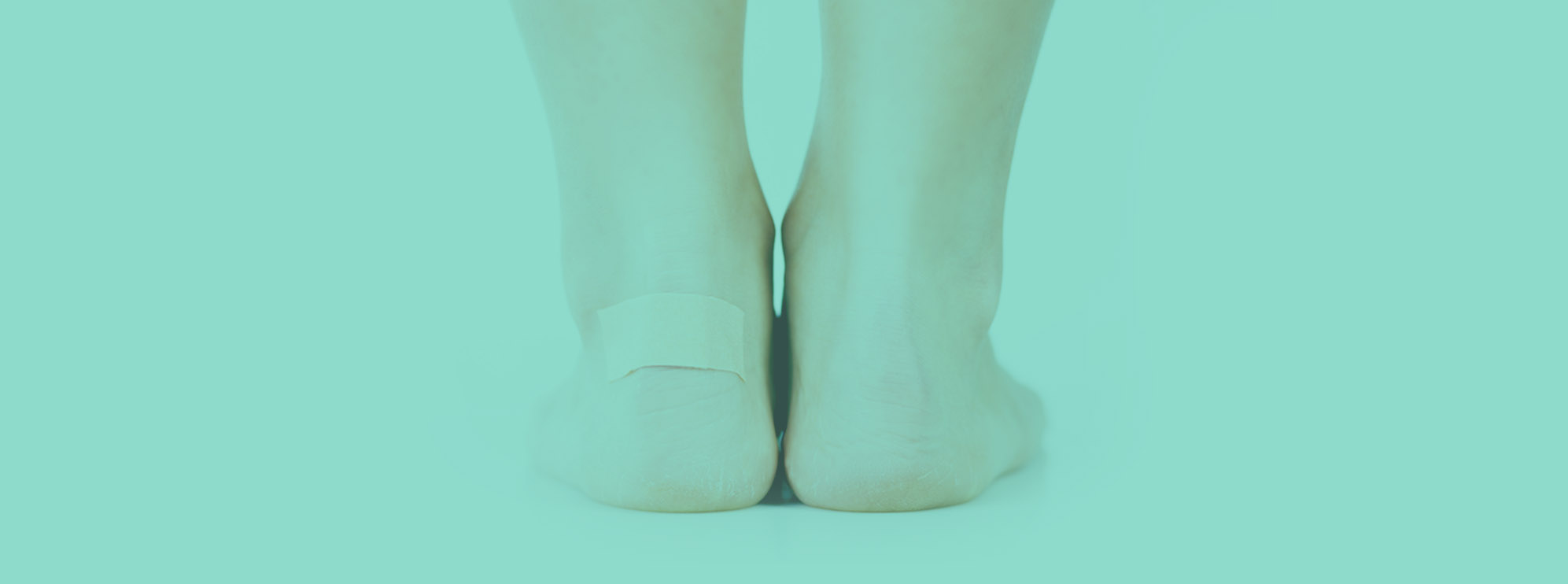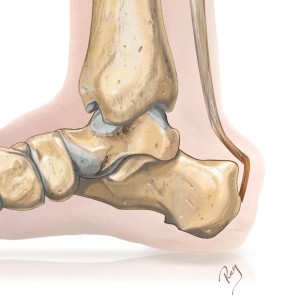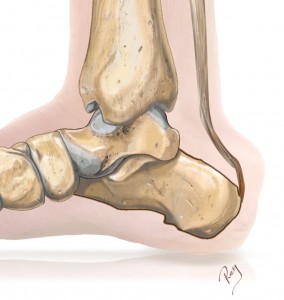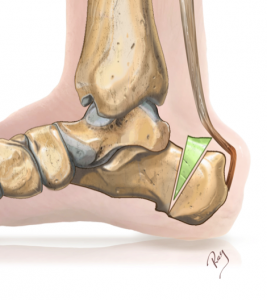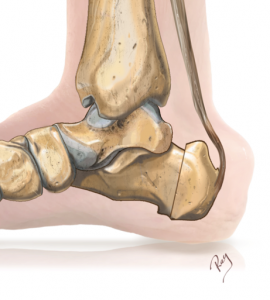Two main techniques can be proposed, depending on the specific architecture of the affected foot, the quality of the Achilles tendon and the functional demand of the patient.
The first, and the most common one, is simply to re-sect the bony postero-superior edge of the calcaneus. This technique also allows an exploration of the insertion of the Achilles tendon and direct action to be taken on the latter, if necessary. The procedure can be carried out by traditional open surgery or using an arthroscopic technique, to limit the surgical aggression and therefore, in theory, offer a more straightforward outcome.
Simple excision of the postero-superior corner of the calcaneus.
In cases of vertical calcaneus, flatfoot or failure after a simple excision, Zadek’s osteotomy can be performed. The procedure consists of removing a triangle of bone in the volume of the calcaneus. By closing this cut, the part in conflict and the insertion of Achilles tendon are displaced upwards and deeper, which significantly reduces the bone-tendon contact. The calcaneus is also shortened, which seems to change the biomechanics of the hindfoot and the lever arm at the level of the Achilles tendon, which also contributes to reducing local constraints.
Zadek’s osteotomy. Note the displacement and rotation of the posterior part of the calcaneus.
